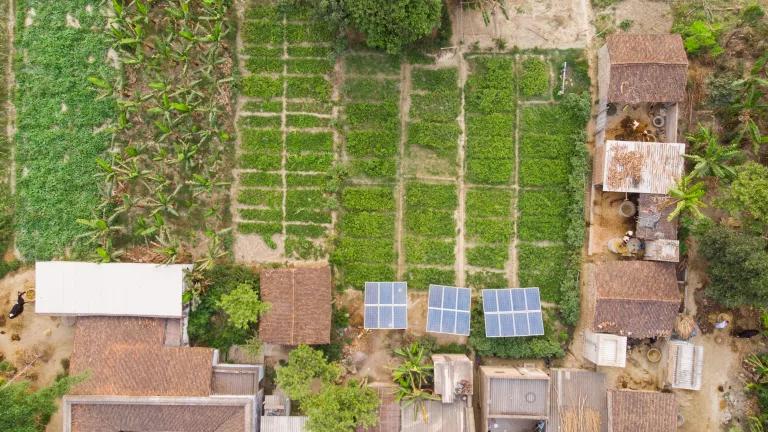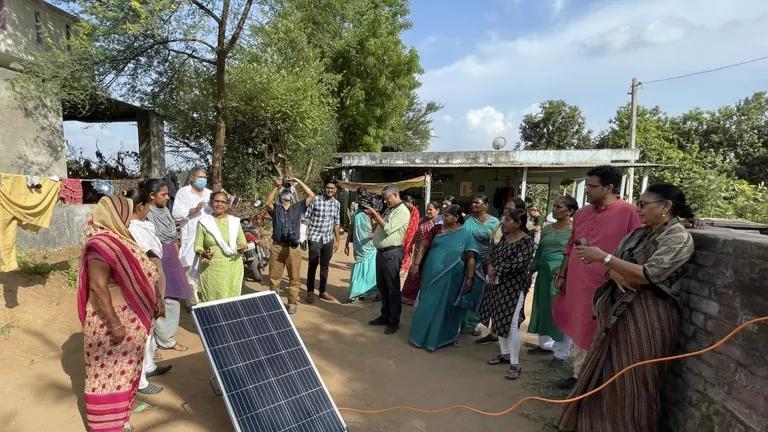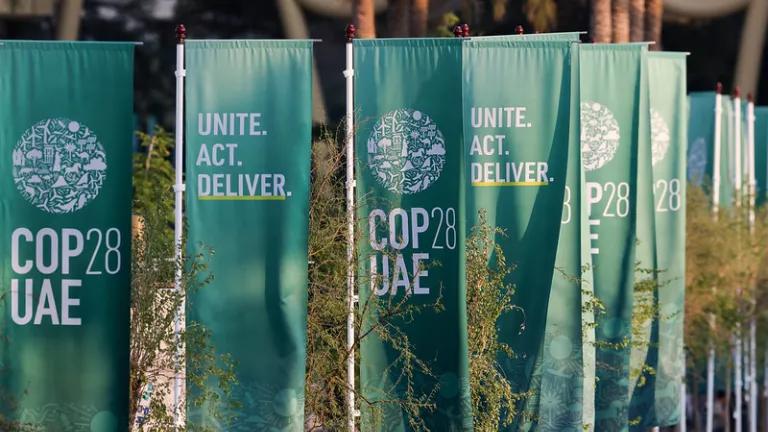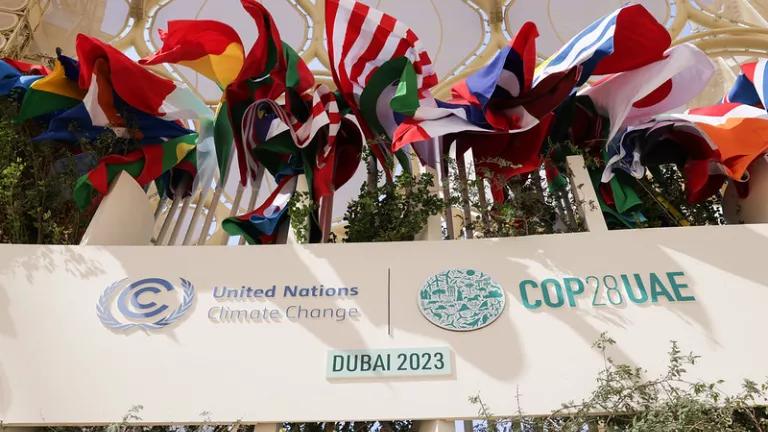A Case for Climate Neutral and Resilient Villages
The importance of a low-carbon resilient village economy in achieving India's net zero goals.

An aerial view of solar panels that power an irrigation pump system in Chakhaji village, Samastipur District, Bihar, India
Led by India, the world’s largest economies committed to urgently accelerate climate action at the G20 New Delhi Summit that concluded last month. India could legitimately claim to have the hardest job of bringing prosperity to a very large population and decarbonizing its economy at the same time. While the impacts of climate change are being experienced worldwide, it is the poorest and most vulnerable populations that suffer the most with the compounding effect of multiple climate and socio-economic stressors. India’s net zero goals have spurred considerable climate action at the sub-national level with several states and cities taking the lead. Along with cities, it is an opportune time to focus efforts on zero carbon, climate resilient development in villages. India’s villages are home to nearly a billion people—more than in the two American continents combined—who aspire to basic necessities of life while facing the threats climate change poses for their survival. With climate neutral and resilient villages, India can create a new paradigm of economic development and set a template for poor and vulnerable communities globally.

A solar trap light to capture insects and help reduce the use of pesticides in farming in Berniya Village, Dungarpur, Rajasthan, India
NRDC India
India has a target of cutting greenhouse gas emissions to zero by 2070 and the clean energy transition is underway across a range of sectors in the Indian economy. Any structural and economic transition towards a net zero economy should happen in a just manner. It begs the question—how we ensure growth and prosperity at the level of villages without relying on a carbon-intensive trajectory. With the growing aspirations of millions living in India’s villages, the challenge will be to provide reliable and affordable energy solutions to alleviate poverty and improve livelihoods, while also spurring the clean energy transition through emissions reduction and reduced dependence on fossil fuels. In addition, making these populations— who are already at the forefront of the worst climate impacts—more resilient is of paramount importance so that their growth is truly sustainable and transformative.

An electricity meter and energy efficient LED lightbulb on the exterior wall of a home in the village of Berniya, India
NRDC India
In recent years, the Indian government has increased its focus on strengthening villages and local governance in the country with several initiatives. There are central government schemes aimed at housing, clean cooking fuel, health insurance, and financial inclusion that focus on the rural populations of India. The 15th Finance Commission of India empowered local governments with a total grant of Rs. 4.36 lakh crores (approximately USD 67 billion) for the period 2021-26. Last year, Jammu and Kashmir’s Palli village was termed as India’s first “carbon neutral panchayat” in a major push towards making villages the epicenter of climate action. Strong local governments aligned with low-carbon economic growth can have a significant impact on achieving India’s net zero targets by 2070. By centering villages in India’s clean energy transition, India has a unique opportunity for taking a holistic approach towards implementation of climate solutions geared towards the entire village economy.
We make the case for climate neutral and resilient villages in support of India’s net zero goals. In subsequent posts, we will delve deeper into what climate neutral means in the context of a village economy and share thoughts on methodologies for developing a model climate neutral and resilient village. Achieving net zero in India is not simply about reduction of greenhouse gas emissions, it encompasses the wider benefits a low carbon resilient economy can provide its citizens on health, social and economic development, and a cleaner environment.





